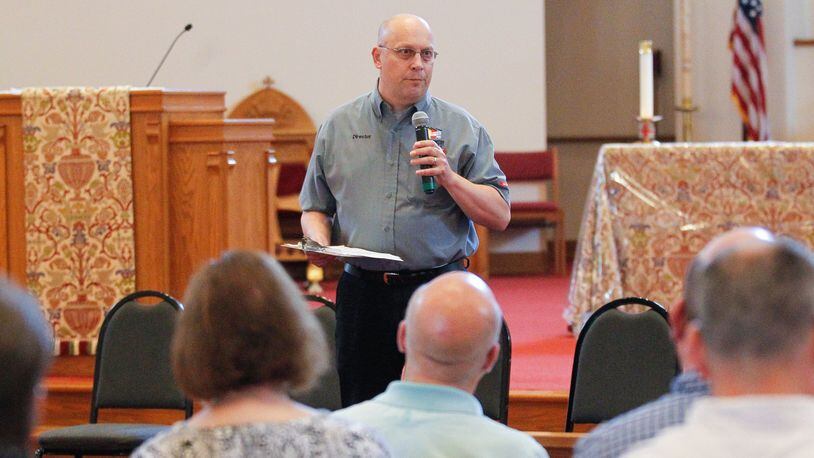“Nothing that happened during the emergencies is reflected in the plan because the plan was with the state.”
“We did 12 years’ worth of emergencies in six months. And they were bigger than the biggest one we faced prior to that. Each one got worse,” said Jeff Jordan, the county’s emergency management director. “Now we are applying it to our overall planning process.”
The plan conveys certain emergency powers, tasks, roles and responsibilities to government officials and county heads. It also outlines the assistance given to communities by those officials in times of crises, emergencies or disasters as declared by county commissioners.
“The plan is the who and what. It is not operational. It’s not how they do something. It’s not tactical,” Jordan said. “It’s what agencies provide what capabilities.”
The overarching priorities of the plan are to keep people alive, protect property from destruction and restore a community to normal. The resolution commissioners passed also requires the county to coordinate to maximum extent with private agencies and state and federal government to prepare for and respond to disasters.
MORE: Dayton Strong Stories: His father died in his arms during the Oregon District mass shooting
The plan gives the county commission, county administrator or emergency management director each the authority to activate the county’s emergency operations center.
Historically, the emergency operations center has been activated about once every three years, Jordan said.
Last year was not typical.
That step was taken four times during 2019: first in February following a region-wide water outage, then for a Courthouse Square rally by an Indiana Ku Klux Klan group, again for the Memorial Day tornadoes and finally for the August mass shooting, which also required a family assistance center to help identify the deceased and notify family members.
Fifteen distinct support functions, such as transportation, communications and public health, are delineated in the plan. Each function is represented in the emergency operations center by a person in direct contact with those in charge of other functions like search and rescue, public works and engineering and information and planning.
“Different disciplines that maybe don’t work together so much are literally face-to-face, so there is less chance of miscommunication,” Jordan said.
County emergency operations plans are revised on a five-year cycle and distributed to partners. While the plan approved Tuesday changed little from the previous one, it and others have proven their worth including when the region got hit by the fallout related to Hurricane Ike in 2008, said Montgomery County Commissioner Debbie Lieberman.
“We saw how the plan worked then and ever since then,” she said. “They take it very seriously.”
Two areas of the plan will see dramatic change in the 2020 revision, Jordan said.
The current plan doesn’t fully outline how donations, when pouring in from across the country, are received, stored and distributed.
“That’s really when you need that donations management plan so you are not having two disasters,” Jordan said.
St. Vincent de Paul became the go-to organization to handle tornado donations, so the new plan update will reflect the organization’s role, he said.
INVESTIGATIONS: Corruption, mass shooter, water safety: Our investigative stories of 2019
The 2020 revision will also reflect how more people are turning toward technology to find ways to pitch in after a disaster and make it easier for the county to track volunteer labor for matching Federal Emergency Management Agency funds.
“With phone apps, people no longer have to go to a physical location to find out where they can help,” Jordan said. “They can find a location on their phone and go directly to that location, that address, that neighborhood and go to work.”
About the Author
